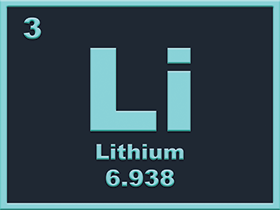

Banks have been challenged with load shedding to keep security systems operational, specifically intruder systems. As the level of load shedding intensified, lead acid batteries, which were being used by most banks to run intruder systems, were showing a significant reduction in life expectancy, and a high level of unreliability.
“Another factor was the battery’s operational time. With daily load shedding sometimes exceeding six hours, the older battery technology was not coping, unable to recharge properly between these long bouts of load shedding,” explains Francois Smuts, key accounts support manager, Elvey Group.
“The challenge was to select the most reliable battery technology to meet the specific needs of extended load shedding. The products that were being used were based predominantly on AGM technology, and to a lesser extent gel.”
“AGM technology, based on life expectancy, is virtually double that of Flooded SLA technology, and around a third better than a gel battery for applications such as low current draw typical of intruder systems. But these technologies were failing to keep the intruder systems running during excessive load shedding periods, causing a spike in battery failures.”
In addition, replacing failed batteries in the field increased labour and travelling costs. With outlying branches, this could equate to a full day’s labour and over a thousand kilometres travelled in some cases, Smuts says.
“Banks needed to review the available options. Years ago, before lithium technology became available, evaluations and tests were conducted, and at the time, AGM was determined to be the most economical choice,” explains Uniross Batteries MD, Michael Rogers.
“Around 18 months ago, one of the Big 5 banks requested Elvey to evaluate the possibility of replacing SLA batteries with lithium equivalents for use in their intruder systems from a feasibility and safety point of view,” Smuts adds. “Initially, the intruder system manufacturers strongly advised against this based on safety issues. This was because, in general, the battery monitoring and charging circuitry of intruder systems are designed for safe use using SLA batteries. At that stage lithium batteries were more prone to an explosion than lead acid.”
Rogers notes: “But with advancements in battery technology, lithium batteries now include a built-in Battery Management System (BMS). This monitors the lithium battery and will shut it down should there be a risk of a failure or overheating. This addressed these concerns and as result the SLA batteries were replaced with lithium.”
“In the evaluation, extensive tests were conducted using DSC and Texecom intruder systems, simulating a typical bank environment. It was found that SLA batteries in intruder systems could be replaced by lithium batteries, with no safety or performance issues while providing all the benefits of lithium,” Smuts says.
“We chose the Uniross 7 AH and 20 AH lithium batteries to replace the current 7 AH and 17 AH (AGM) SLA batteries. Our tests revealed that the BMS used by Uniross in its lithium series batteries are more in-line with the typical intruder system’s battery charging circuitry, taking frequent load shedding into consideration.”
The lithium solution is performing according to expectations, but some time will be required for the banks to derive accurate figures relating to the benefits. “But already the uptime is significantly higher as well as performance and reliability.
“From a cost saving point of view, relating to historical battery replacements, cost savings are expected to exceed 60% over the next two to three years,” says Smuts.
“In terms of productivity benefits from a load shedding point of view, because lithium batteries maintain their voltage virtually throughout a discharging period, an intruder system’s battery operational time is extended by at least 15%. In some cases, this equates to hours.
“With service providers spending less time replacing and fault-finding battery-related issues, their average callout turnaround time for other intruder system related issues is dramatically reduced,” Smuts concludes.
| Tel: | +27 11 466 1156 |
| Email: | [email protected] |
| www: | www.uniross.co.za |
| Articles: | More information and articles about Uniross Batteries |

© Technews Publishing (Pty) Ltd. | All Rights Reserved.